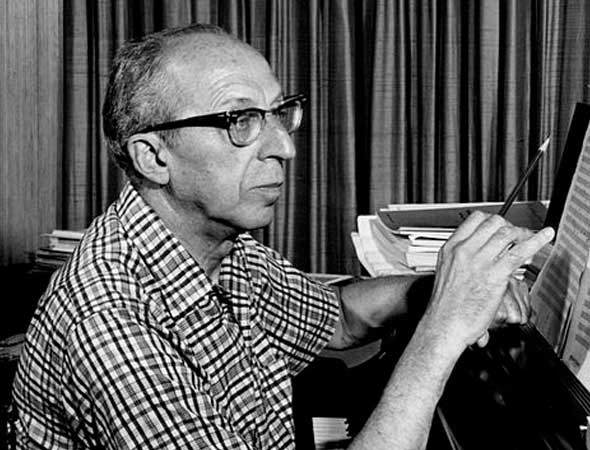COPLAND: Symphony No. 3
by Jeff Counts
THE COMPOSER – AARON COPLAND (1900-1990) – For Copland, the late 1930s and early 1940s were years of artistic crystallization. He spent them composing the works that confirmed his status as one of America’s leading musical icons, a position from which he hoped to further legitimize his country’s orchestral tradition in the wider world. His great ballet scores (Billy the Kid, Rodeo, Appalachian Spring) all date from this fertile stretch and, though Copland experimented with a wide variety of contemporary styles over the course of his career, it is the highly personal sound he created during this period that he is best remembered for today.

THE HISTORY – Like Stravinsky, Copland used the ballet genre to express a fresh, idiomatic kind of nationalism. Both men found the ideal blend of folk influence and individual compositional character that captured (and in some ways transcended) the spirit of their respective cultures. And also like Stravinsky, Copland would tread somewhat lightly toward the more traditional field of symphony writing. Officially, he only wrote three and they are so different from one another they barely warrant classification as a set. Heard in sequence, they are indeed a baffling journey. The youthful 1st was essentially an organ concerto and the 2nd a deft neo-classical suite lasting little more than 15 minutes. How then do we consider the much more monumental (and in most ways more “conventional”) Symphony No. 3 of 1946? It was composed on commission from conductor Serge Koussevitzky, a friend to so many important composers of the day and a sturdy champion of Copland’s music in particular. Much like the search for the Great American Novel, the Great American Symphony was an aspirational mid-century dream for a country that longed to compete credibly with the Old World. Koussevitzky certainly felt like he got what he paid for in this case, calling Copland’s 3rd not only “great”, but the “greatest”, remarking that it “goes from the heart to the heart.” He’s right. The Symphony is nothing if not American, in the sense that the music is patriotic and emotionally direct, projecting deep feeling in an earnest, plainspoken vernacular. Given his history of quotation and reference, it is fascinating to note that with Symphony No. 3, Copland managed to create a moving aural portrait of his country without the explicit use of folk melodies. He relied instead on established material from his own catalogue by citing the Fanfare for the Common Man (1942) nearly verbatim in the fourth movement and varying it right through to the end with thrilling, life-affirming results.
THE WORLD – Elsewhere in 1946, the Philippines gained its independence, Italy shed its monarchy to become a republic, the verdicts of the first Nuremberg Trials were read, the film premiere of It’s a Wonderful Life occurred in America.
THE CONNECTION – The most recent Copland Symphony No. 3 concert took place in November 2018 under the direction of Thierry Fischer.











